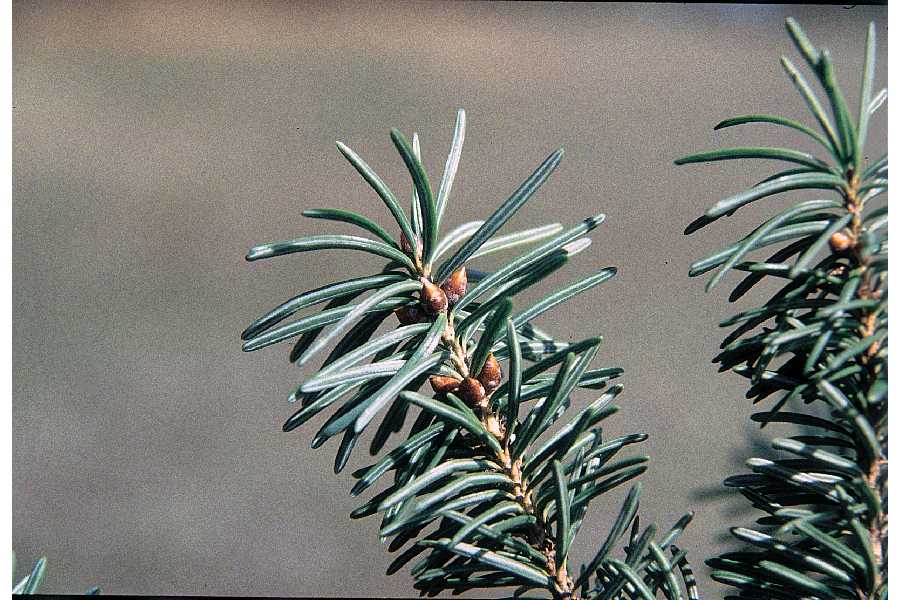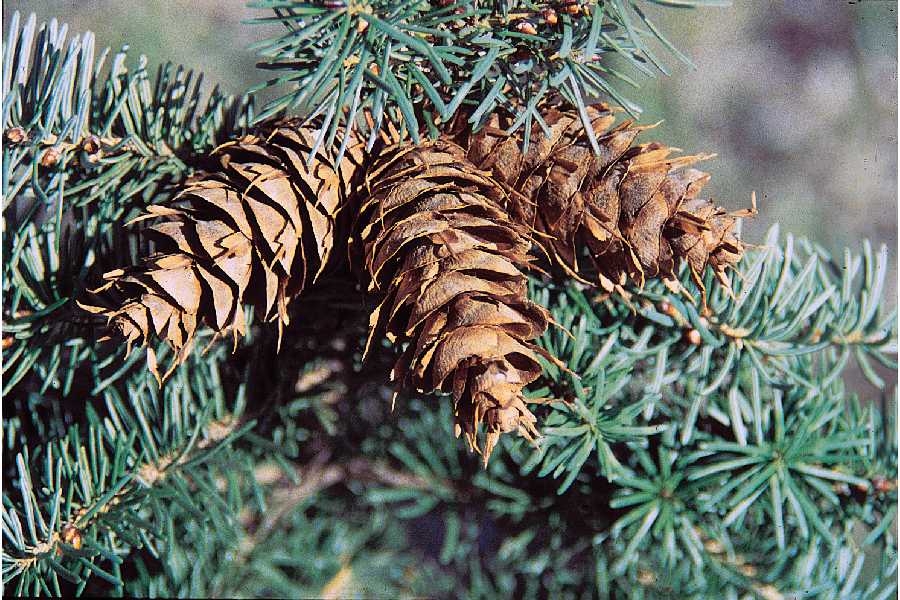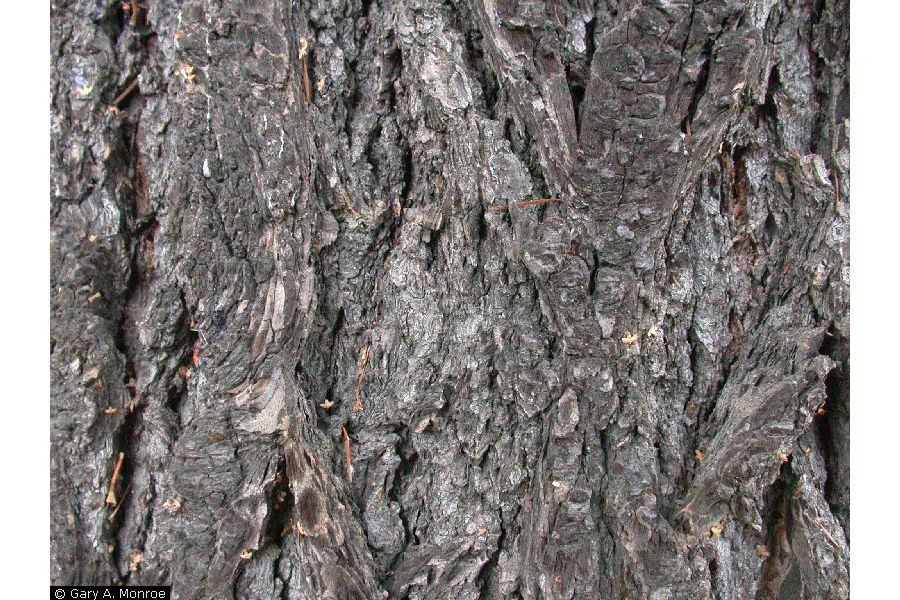| PSC 2620: Woody Trees and Shrub | Course Home | Week 13 |
Pseudotsuga menziesii - Douglas Fir
Plant Viewer
 |
 |
| The needles of Douglas Fir are 1 - 1 1/2 inches long. The bottom of the leaf has two white stripes running the length of it. Image: D.E. Herman, USDA | The cones are 3-4 inches long and ovate. They have three-pointed bracts emerging from beneath the scales. Image: D.E. Herman, USDA |
 |
|
| The bark is brown with red highlights. It has deep ridges and furrows. Image: Gary Monroe, USDA |
Plant Description
Pseudotsuga menziesii, or Douglas Fir (often listed as one word: Douglasfir), is a large coniferous evergreen tree growing 40-80 feet high and 12-20 feet wide. It has a very narrow form, more columnar than pyramidal except when young. The branches are held out horizontally with the branchlets weeping from them, similar to Picea abies. On mature trees, the lower half of the trunk may be bare. Douglas Fir prefers moist, well drained acidic soil. It grows best in moderate and humid climates such as the Northwest. While it will tolerate our climate, it is best if it is kept in a location that will offer it some protection from dry winds.
The bark is reddish-brown color and has deep ridges and furrows. Young stems have smooth bark with resin blisters on it. The needles are composed 1 - 1 1/2 inches long and can arranged on the stem either radially or in two ranks. The bottom side of the needles has two pale strips on it. The needle has a slight indent running the length of it. They are bluish-green in color. Dirr notes that the Pacific coastal strain of Pseudotsuga menziesii has green needles, but the plants of these species are not hardy in our climate.
The cone is 3-4 inches long and have an elongated oval form. Three-pointed bracts protrude from beneath the scales of the cones. They are lime green with reddish highlights when immature, and turns reddish brown when it matures.
Landscape Use
While it is an attractive specimen, it does not perform as well in our climate as other conifers. Its narrow form makes it ideal for use in tight spaces, but it can reach massive heights that may appear out of scale in such a setting. It looks best when used in groupings instead of singly.
Points of Interest
Perhaps the most recognized use for Pseudotsuga menziesii in the western United States is as a Christmas tree.